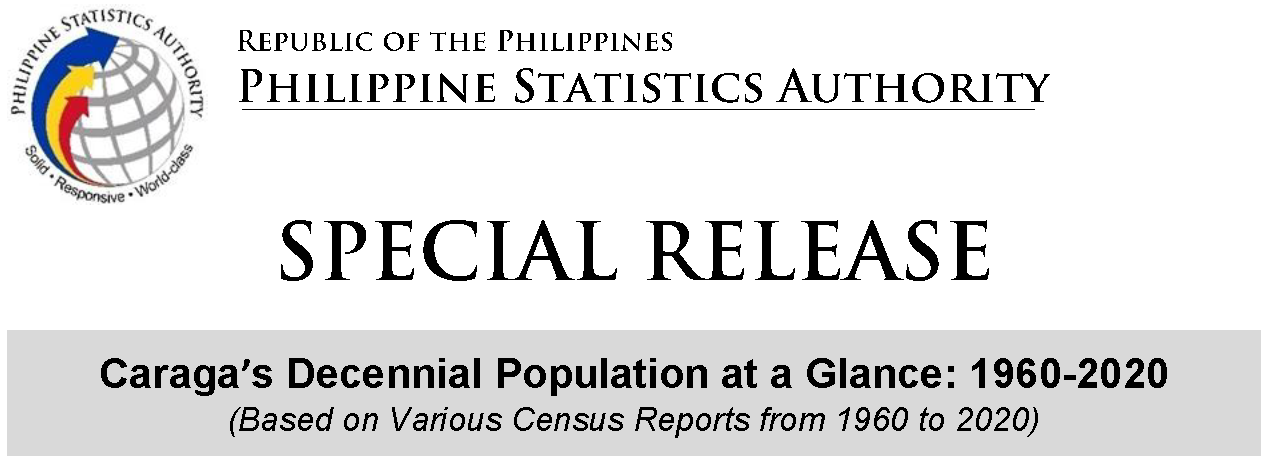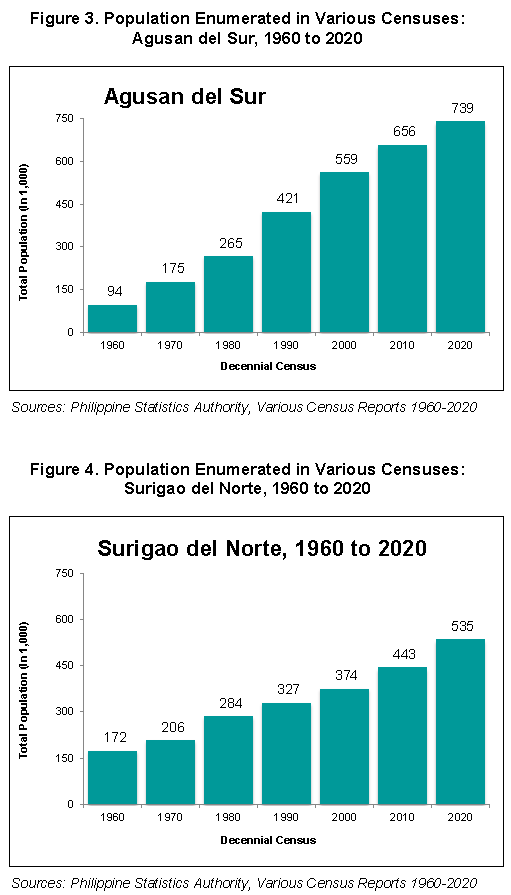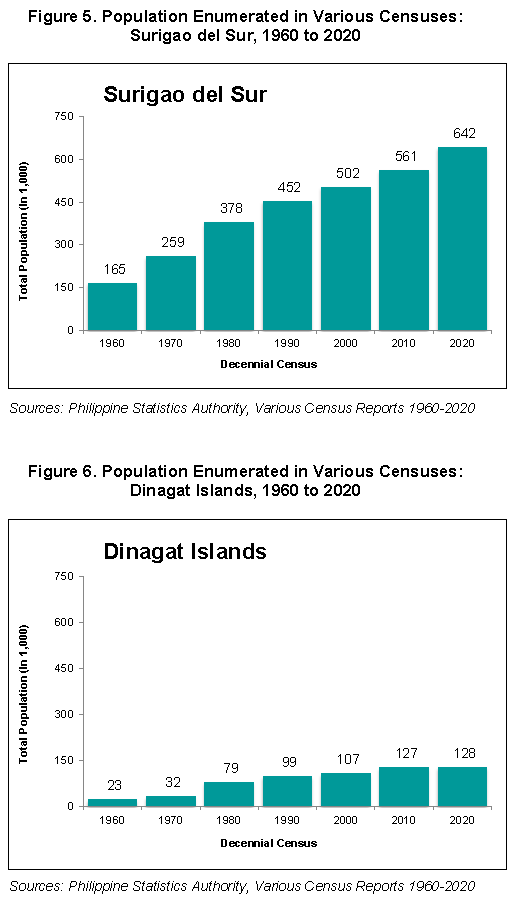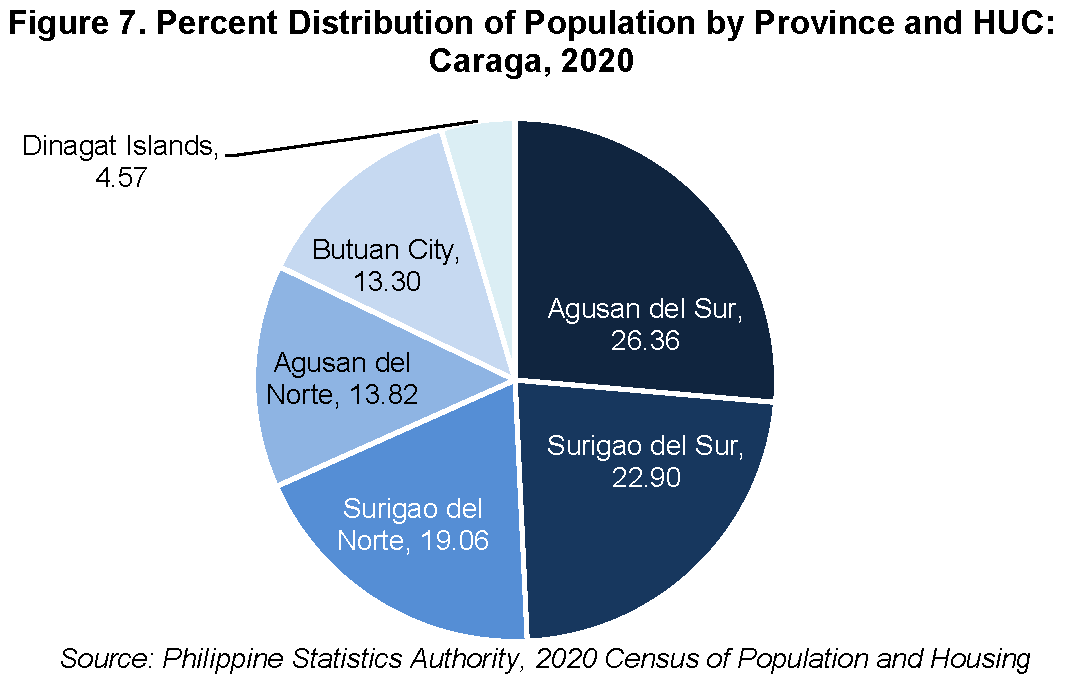Censuses

Caraga’s population increases for the past 60 years
The total population of Caraga from 1960 to 2020 is increasing based on various census reports. For the past 60 years, the percent change is 344.49 percent. Comparing the percent change every 10 years, the highest percent change is from 1960 to 1970 with 50.57 percent.

Highest PGR in 1990 to 2000
For the past 30 years, the annual population growth rate (PGR) is more than one percent and the highest was in the period 1990 to 2000 with 1.73 percent. On the other hand, the lowest PGR was in the period 2010 to 2020 with 1.45 percent.

Increasing population counts for all the provinces and lone HUC
All the five provinces of Caraga, including Butuan City, its lone Highly Urbanized City (HUC), have increasing population counts from 1960 to 2020. The succeeding figures illustrate the details.



Agusan del Sur has the largest population size for the past 20 years
Among the five provinces of Caraga, Agusan del Sur had the highest proportion of population count from 2000 to 2020 with 26.36 percent. On the other hand, Dinagat Islands had the least with 4.57 percent.

Lowest PGR in Dinagat Islands for the period 2010 to 2020
Although all provinces and HUC have positive PGRs from 1990 to 2020, it is evident that Dinagat Islands had the lowest PGR for the period 2010 to 2020. This implies that the growth of the population in the said province is very slow. On the other hand, the fastest growing population was in Surigao del Norte (1.91%) which was followed by Agusan del Norte (1.54%).

TECHNICAL NOTES
Introduction
The Philippine Statistics Authority (PSA) shall primarily be responsible for the implementation of the objectives and provisions of R.A. 10625, R.A. 11055, and R.A. 11315.
It shall primarily be responsible for all national censuses and surveys, sectoral statistics, community-based statistics, consolidation of selected administrative recording systems, and compilation of national accounts.
One of the functions of the PSA is to prepare and conduct periodic censuses on population, housing, agriculture, fisheries, business, industry, and other sectors of the economy.
Definition of Terms
Total population refers to the sum of household and institutional population.
Household population refers to all persons who are members of the household.
Institutional population the population enumerated during a census living in large institutions, such as national prisons and penal colonies, provincial and large city jails, tuberculosis sanitaria, mental hospitals, leprosaria, military, mining and logging camps, etc. The cut-off is more than 6-months duration.
Population Growth Rate indicates how fast a population increases or decreases as a result of the interplay of births, deaths, and migration during a given period of time. Where the population is closed, meaning no migration, the population growth rate is the same as the rate of natural increase, i.e., the difference between the number of births and the number of deaths during a specified period of time. The three methods for computing the rate of growth based on the assumption with respect to the change are: arithmetic change, geometric change and exponential change.
Approved by:
(Sgd.)ROSALINDA C. APURA, D.M.
Regional Director, PSA-RSSO XIII
Telephone number: (085) 225-5219 / Telefax No.: (085) 815 – 4935
Email address: psacaraga_rsso13@yahoo.com.ph

